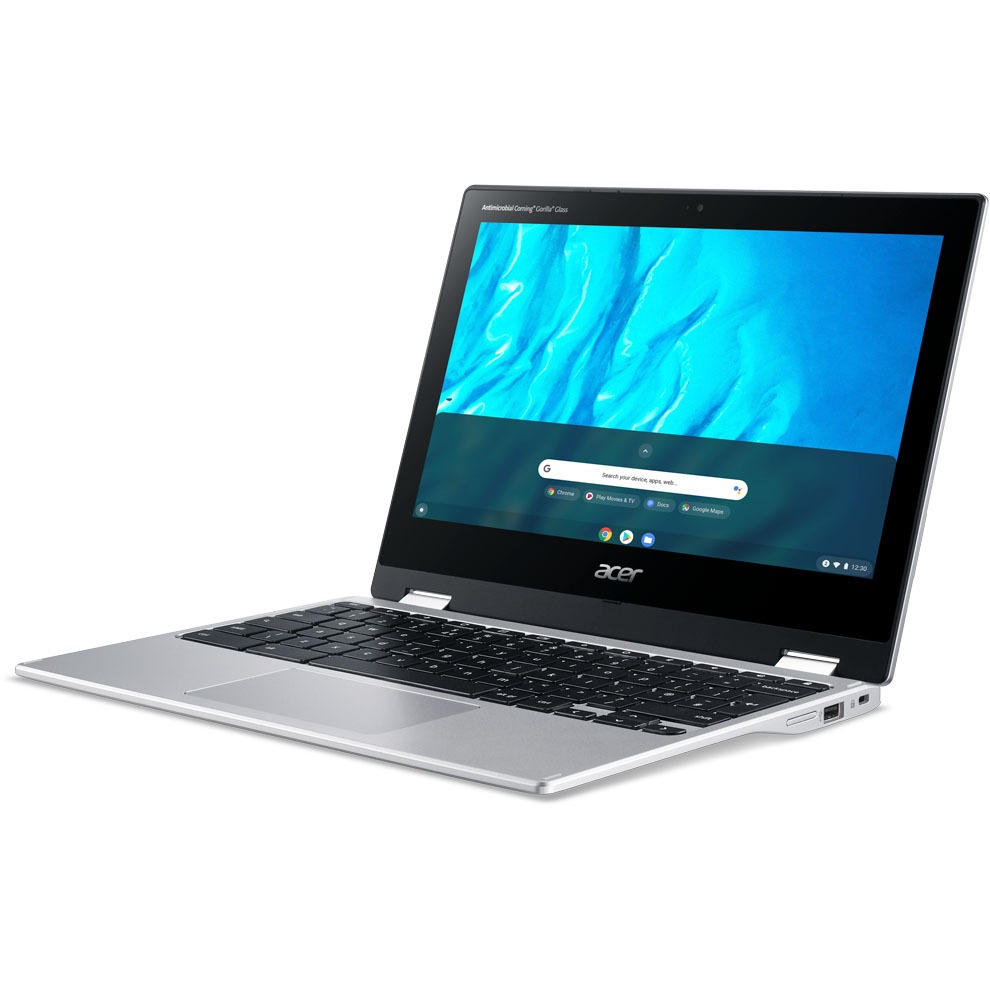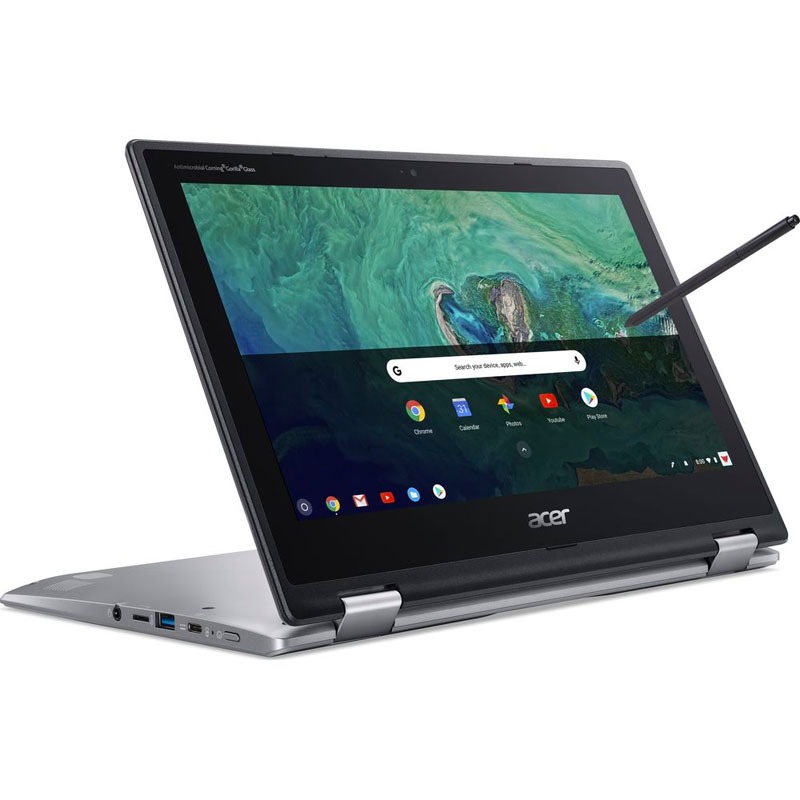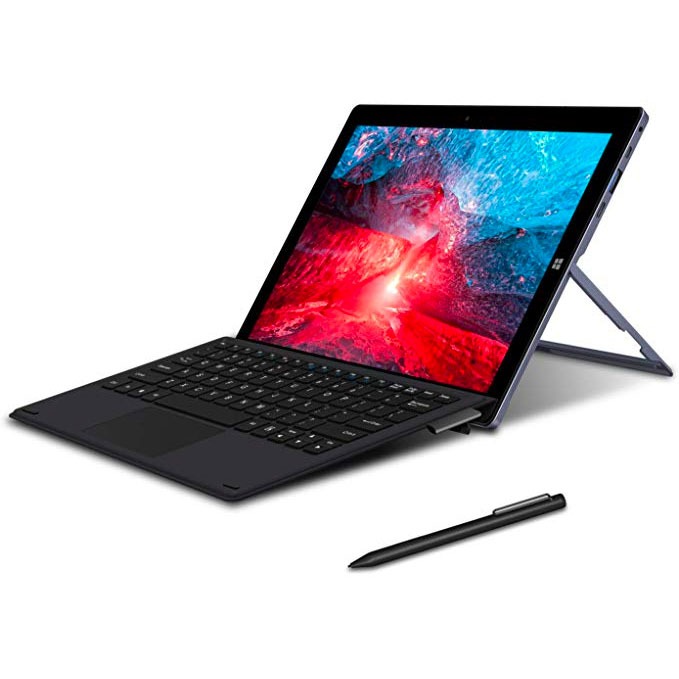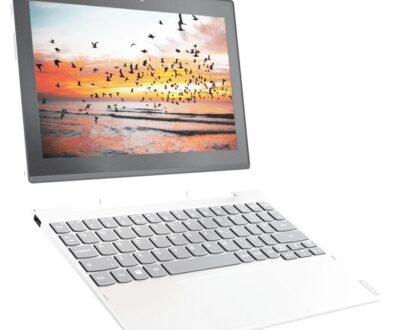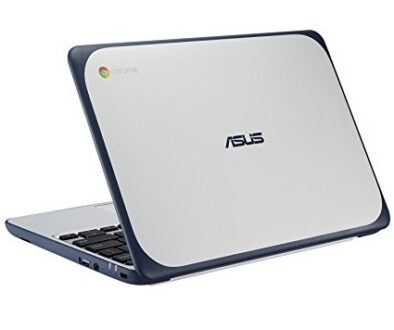Lenovo Tab M11 vs Amazon Fire Max 11: Which Budget 11-Inch Tablet Should You Buy?
The 11-inch tablet space has become one of the most competitive in 2025, striking the balance between portability and performance. Two of the standout options in this category are the Lenovo Tab M11 and the Amazon Fire Max 11. Both offer sharp 11-inch displays, mid-range hardware, and strong entertainment features, but they are built with very different users in mind. Keep reading to find out more.
Lenovo leans on Android versatility and pen support for productivity and study, while Amazon pushes integration with its ecosystem for streaming, reading, and everyday use.
If you’re deciding between the Tab M11 and the Fire Max 11, it helps to look closely at their design, displays and overall build quality before diving into performance, software, and battery life. We take a look at every aspects that matter.
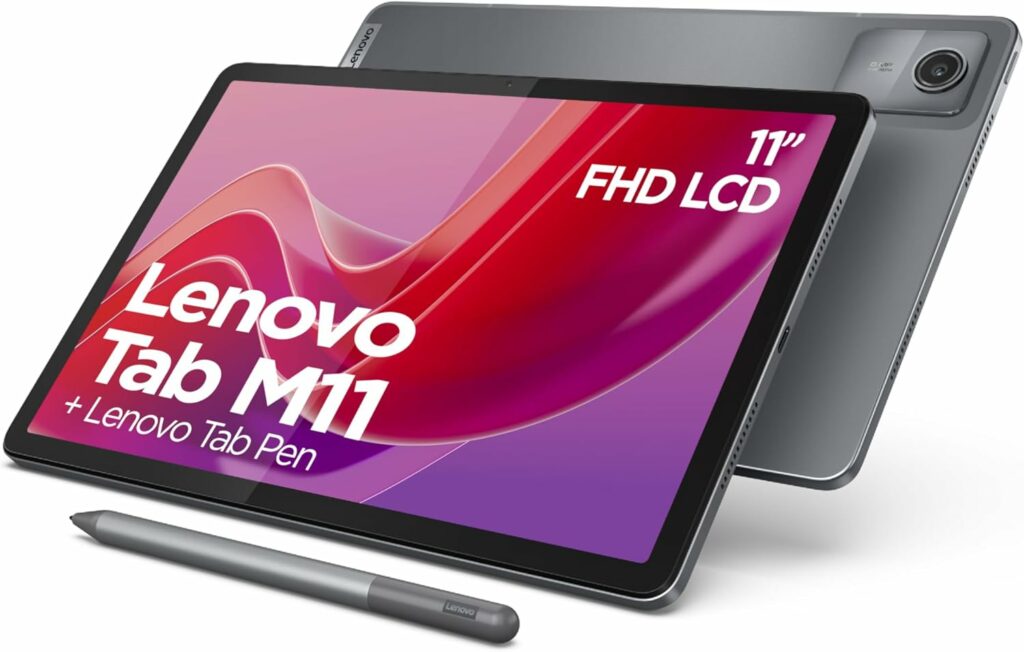
Design & Build
The Lenovo Tab M11 goes for sleek minimalism. Finished in Luna Grey, it has a modern look that feels comfortable in the hand, whether you’re studying, sketching, or watching a film. At 11 inches, it’s compact enough to slip into a backpack yet large enough for immersive media. Lenovo positions it as a tablet for portable entertainment with practical versatility, and it shows in the lightweight but sturdy design.
The Amazon Fire Max 11, on the other hand, is built to feel more premium than any previous Fire tablet. Its aluminium chassis and slim profile make it stand out, offering a sturdier and more durable feel compared to the plastic builds of earlier Fire models. Amazon clearly wants the Fire Max 11 to be seen not just as a media device but as a productivity-ready tablet, with the option of adding a magnetic keyboard and stylus.
Both tablets are easy to carry and have designs that look modern and stylish, but Lenovo’s design is more student- and family-friendly, while Amazon’s has a refined, professional edge.
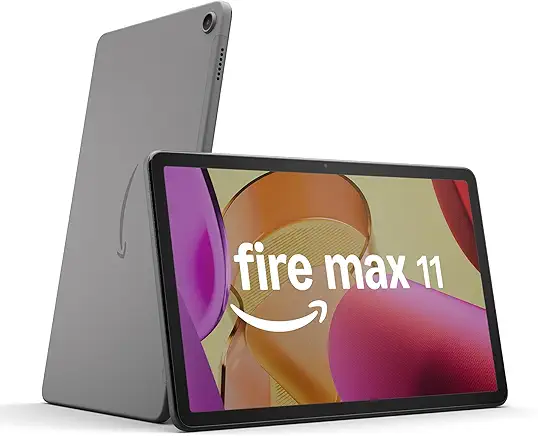
Display
Both tablets feature an 11-inch screen, but they take different approaches to visual performance.
The Lenovo Tab M11 comes with an 11-inch 1920 × 1200 IPS display, offering Full HD resolution, 400 nits brightness, and a 90Hz refresh rate. The 90Hz panel ensures smoother scrolling and animations compared to standard 60Hz displays, which is particularly noticeable when browsing or gaming. The screen covers 72% of the sRGB colour gamut, not as vivid as higher-end tablets, but perfectly suitable for streaming, reading, and light creative work. Lenovo also includes TÜV low blue light certification, making it easier on the eyes during long study or binge-watching sessions.
The Amazon Fire Max 11 delivers a 2000 × 1200 resolution display, giving you a little extra sharpness. While it lacks the 90Hz refresh rate, its vivid colours and crisp text rendering make it excellent for watching Prime Video, browsing Kindle books, or video calls. For everyday entertainment, the Fire Max 11 offers a bright, sharp display that competes well in its price range, though it doesn’t have the same eye-care certifications as Lenovo.
In short: Lenovo gives you smooth motion and eye comfort, while Amazon provides slightly sharper visuals tuned for media consumption.
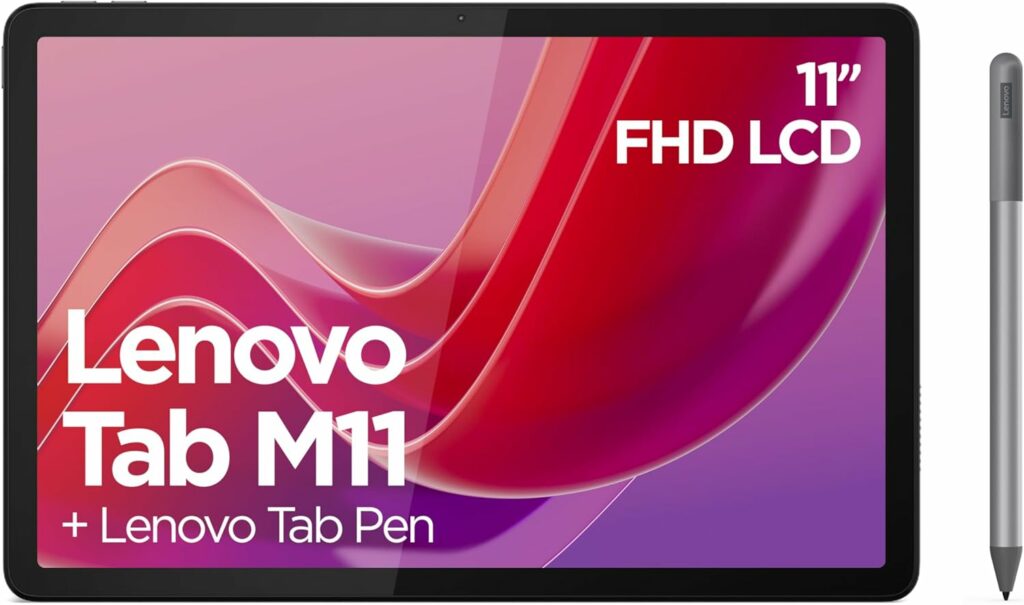
Performance & Hardware
Under the hood, the Lenovo Tab M11 runs on the MediaTek Helio G88 processor, paired with 4 GB of RAM in the base model and up to 128 GB of storage. Storage can be expanded further with a microSD card, which is handy if you plan on loading the tablet with movies, offline playlists, or lecture notes. The Helio G88 is designed for everyday tasks, streaming, browsing, light gaming—and while it’s not a powerhouse, the combination of 4 GB RAM and Android optimisation keeps things smooth for most users.
The Amazon Fire Max 11 uses an octa-core processor and also includes 4 GB of RAM, but only 64 GB of storage in the entry version. Thankfully, Amazon includes support for expandable storage up to 1 TB, which makes it far more flexible than older Fire tablets. You can also opt for one with 128GB internal storage. The extra cores in the Fire Max 11’s CPU give it an edge in multitasking, but its performance still aligns with mid-range tablets. Apps load quickly, streaming is seamless, and gaming performance is solid for casual titles.
Overall, Lenovo offers slightly better storage out of the box, while Amazon relies on its expandable storage and stronger CPU for balance. If you prefer a faster tablet, the Fire Max is one to aim for.
Lenovo Tab M11 Benchmarks
| Geekbench 6 (Single-Core) | 435 |
| Geekbench 6 (Multi-Core) | 1457 |
| AnTuTu Benchmark 10 | 277769 |
https://nanoreview.net/en/tablet/lenovo-tab-m11
Amazon Fire Max 11 Benchmarks
| Geekbench 6 (Single-Core) | 942 |
| Geekbench 6 (Multi-Core) | 2291 |
| AnTuTu Benchmark 10 | 429034 |
https://nanoreview.net/en/tablet/amazon-fire-max-11
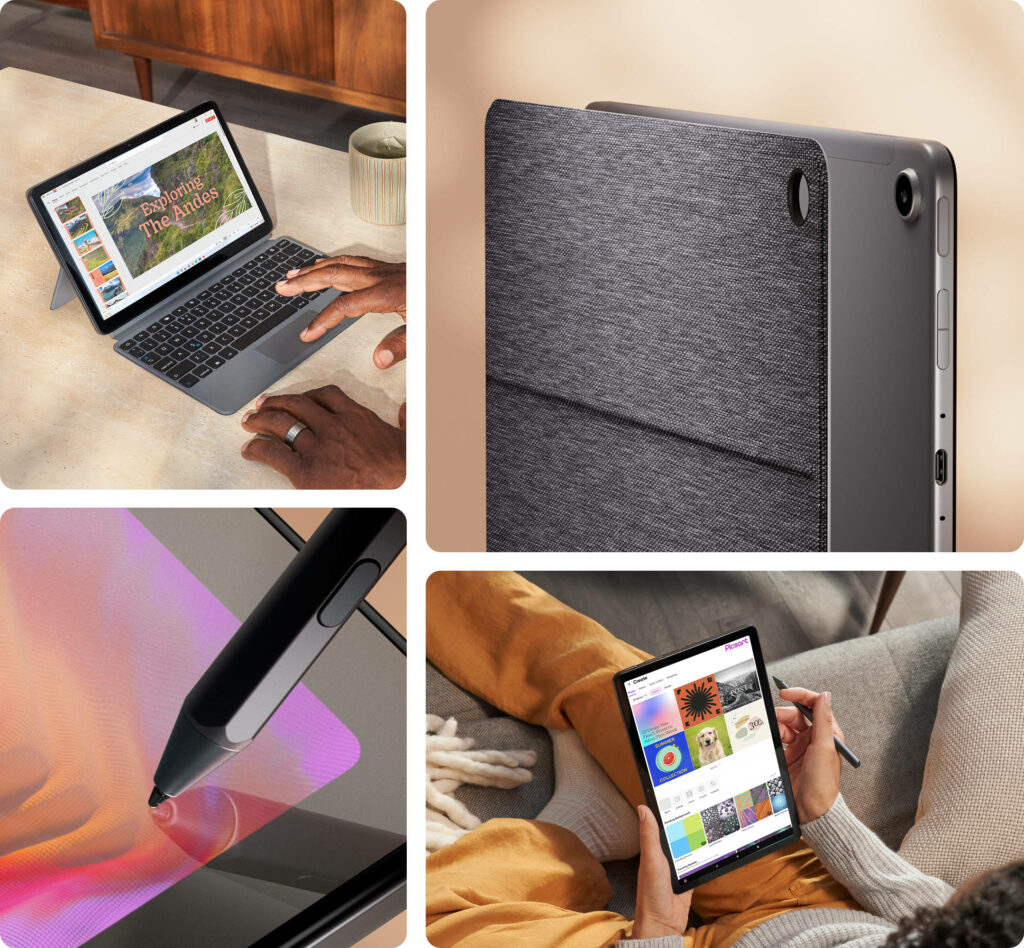
Stylus & Productivity
One of the key differences between these two tablets is how they handle pen input.
The Lenovo Tab M11 comes with Lenovo Tab Pen or Tab Pen Plus support, and in some packages, the pen is included in the box. This makes it immediately appealing to students and professionals who want to take notes, annotate PDFs, or sketch. Combined with Android’s wide range of apps, it becomes a versatile tool for productivity and creativity.
The Amazon Fire Max 11 does support a stylus, but it’s sold separately, and the experience is limited by Fire OS. While you can jot notes or doodle, you won’t find the same breadth of creative and productivity apps as on Android or iOS. Amazon positions its stylus more as an optional add-on rather than a core feature.
If productivity, study, or creative work is a priority, the Lenovo Tab M11 is the stronger choice thanks to pen support baked into its design and app ecosystem.
Software & Ecosystem
Perhaps the biggest difference between these two tablets is software.
The Lenovo Tab M11 runs on Android 13, giving you full access to the Google Play Store. That means millions of apps, from Google Workspace and Microsoft Office to YouTube, Netflix, and creative apps like Canva and Sketchbook. This makes the M11 a versatile device that can flex between entertainment, study, and light work.
The Amazon Fire Max 11 uses Fire OS, a customised version of Android tightly integrated with Amazon services. You get easy access to Prime Video, Kindle, Audible, and Alexa, but the app selection is restricted to the Amazon Appstore. Key Google apps, like YouTube or Gmail, aren’t available natively—though some users sideload them as a workaround. For users already deep in the Amazon ecosystem, this software feels natural and convenient, but it can be limiting if you rely heavily on Google or productivity apps.
In short: the Lenovo Tab M11 offers flexibility and choice, while the Fire Max 11 is best suited for Amazon loyalists who want a device built around streaming and reading.
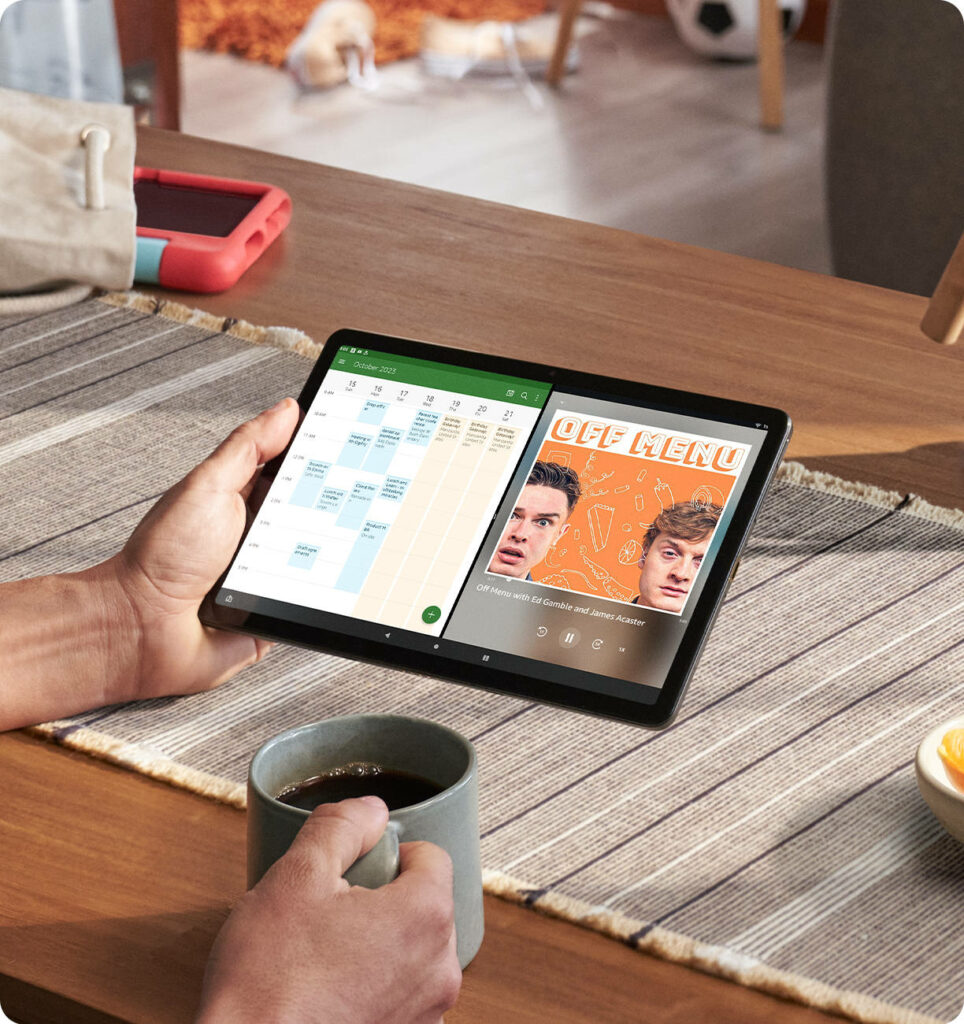
Battery Life & Charging
Battery life is one of the most important factors when choosing a tablet, especially if you plan to use it for travel, studying, or long streaming sessions.
The Lenovo Tab M11 offers up to 10 hours of video playback, which is enough to comfortably get through a full day of lectures, work, or a long-haul flight. Charging is via USB-C, and while it doesn’t boast the fastest charging speeds on the market, it is reliable and keeps downtime to a minimum.
The Amazon Fire Max 11 pushes further with up to 14 hours of battery life on a single charge. This makes it one of the longest-lasting mid-range tablets available right now. For heavy binge-watchers, avid Kindle readers, or anyone who doesn’t want to worry about recharging daily, the Fire Max 11 sets itself apart in this category.
If endurance is your top priority, Amazon’s Fire Max 11 leads. Lenovo, however, still delivers enough power for most daily needs.
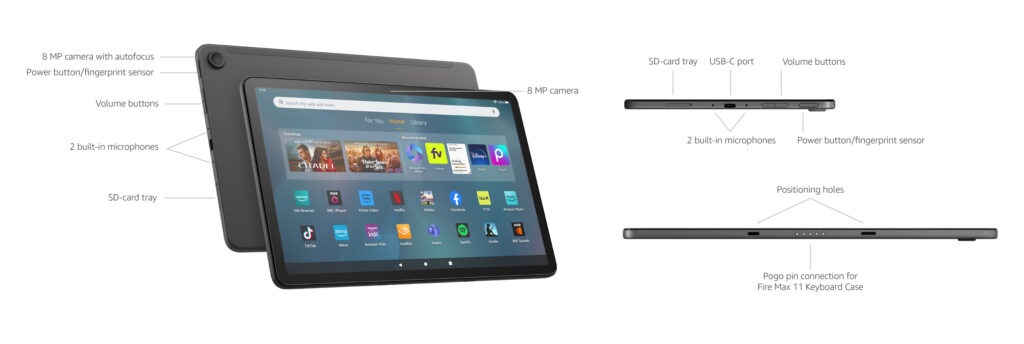
Entertainment & Media
Both tablets are clearly built with entertainment in mind, but they take slightly different routes to deliver it.
The Lenovo Tab M11 is designed as a media hub, with quad speakers tuned with Dolby Atmos. Whether you’re watching Netflix, listening to music, or catching up on YouTube, the surround-style audio creates an immersive experience. Combined with the 90Hz screen, it feels smooth and enjoyable for extended viewing.
The Amazon Fire Max 11 also offers strong multimedia performance, especially when tied into Amazon’s services. Its bright display and solid speakers deliver immersive sound, and being deeply integrated with Prime Video, Kindle, Audible, and Alexa makes it perfect for those already subscribed to Amazon. Whether you want to stream the latest series, download a Kindle book, or call up Alexa for hands-free control, the Fire Max 11 thrives within Amazon’s ecosystem.
For pure flexibility and broader app choice, Lenovo takes the crown. For those who are already Amazon Prime members, the Fire Max 11 unlocks the most value.
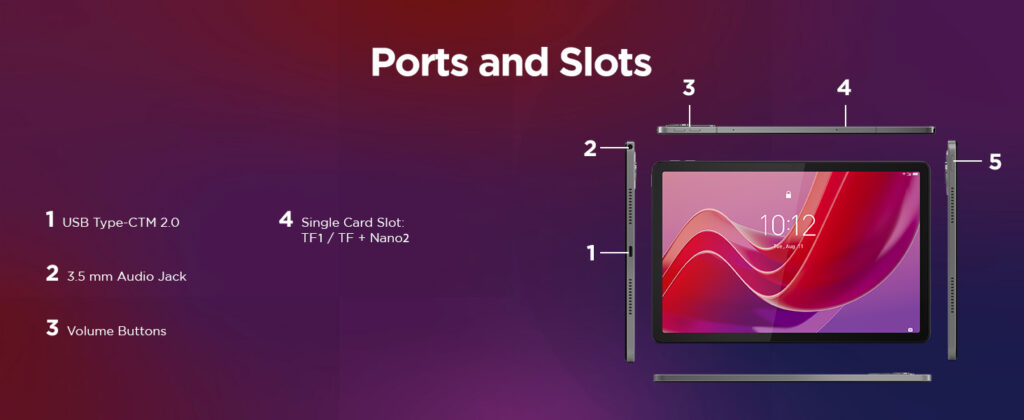
Price & Value
Price is often the deciding factor, and both tablets aim for the mid-range market.
The Lenovo Tab M11 positions itself as an affordable option, especially since many bundles include the Lenovo Tab Pen. With decent performance, Android versatility, and pen support, it offers strong value for students, professionals, or families who need a reliable all-rounder without overspending.
The Amazon Fire Max 11 comes in slightly higher, reflecting its premium build quality and longer battery life. Add-ons like the keyboard and stylus cost extra, which can raise the total price if you want the full productivity setup. For users heavily invested in Amazon’s services, however, the integration and seamless access can easily justify the extra spend.
Verdict: Which Tablet to Choose?
So, should you go for the Lenovo Tab M11 or the Amazon Fire Max 11?
- Choose the Lenovo Tab M11 if you want an Android tablet with access to the full Google Play Store, solid pen support out of the box, and a balance of entertainment and productivity features. It’s ideal for students, artists, and anyone who values versatility.
- Choose the Amazon Fire Max 11 if you are deeply tied to the Amazon ecosystem. With longer battery life, a premium aluminium design, and seamless integration with Prime Video, Kindle, and Alexa, it’s the best choice for streaming-first users and Amazon loyalists.
Both tablets deliver excellent value for their price brackets. The right choice depends on whether you want the freedom of Android or the convenience of Amazon.
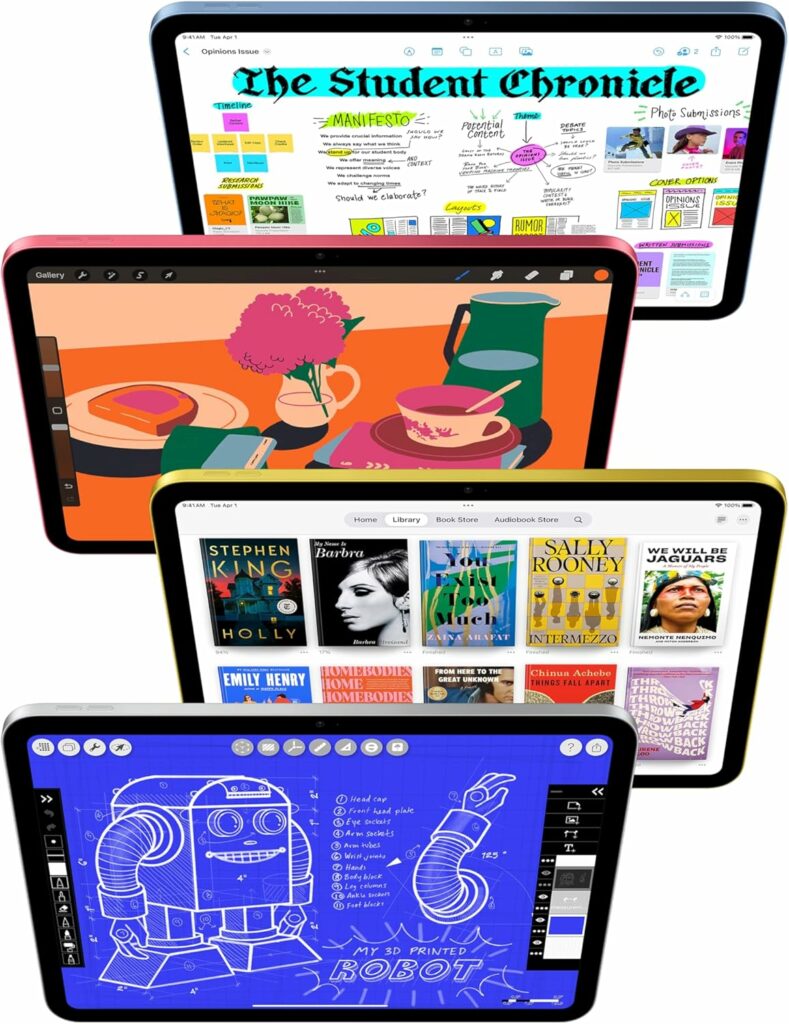
Other 11-Inch Tablet Options to Consider
If you’re exploring the 11-inch tablet category beyond the Lenovo Tab M11 and Amazon Fire Max 11, there are several other strong contenders in 2025 worth considering. Each offers a different balance of performance, software, and price:
Apple iPad (11-inch)
- Nearly 11 inches, this iPad is the go-to option for those who want access to the Apple ecosystem.
- Runs on the A16 Bionic chip, offering smooth performance for gaming, productivity, and creative apps.
- Works seamlessly with the Apple Pencil and Magic Keyboard Folio.
- iPadOS gives access to a wide range of optimised apps for study, work, and media.
- A pricier option, but unmatched in terms of software longevity and app support.
Samsung Galaxy Tab A9+ (11-inch)
- Samsung’s affordable 11-inch tablet, aimed at everyday entertainment and family use.
- Features an 11-inch LCD display (1920 × 1200) with good brightness and colour balance.
- Powered by the Qualcomm Snapdragon 695 5G processor with up to 8 GB RAM, it’s capable of smooth browsing, streaming, and light multitasking.
- Comes with quad speakers with Dolby Atmos, making it strong for movies and music.
- Runs Android 13 with Samsung’s One UI, ensuring good app support and regular updates.
- Features an 11-inch 2.5K display (2560 × 1600) with sharp visuals and smooth performance for streaming, reading, and browsing.
- Powered by an Octa-core processor, paired with up to 8 GB RAM and 256 GB storage, offering excellent value in its price bracket.
- Equipped with quad speakers for immersive audio, tuned for movies, games, and music.
- Comes with a large 9000mAh battery, delivering long sessions of use without frequent charging.
- Includes Bluetooth 5.3 for fast, stable connectivity with wireless headphones and accessories.
- Cameras: 8 MP front and rear, sufficient for video calls and casual photography.
- A cost-effective Android tablet with an 11-inch 2880 × 1800 display and 144Hz refresh rate, making it great for both work and gaming.
- Supports the Xiaomi Smart Pen and keyboard accessories.
- Offers a strong balance between price and performance, with Snapdragon power under the hood.
- Growing software support makes it one of the most competitive mid-range Android tablets.
- Slightly larger than 11 inches, but worth a look for its unique 7:5 aspect ratio, which gives you more vertical space for documents and browsing.
- Runs on a MediaTek Dimensity 9000 processor with up to 12 GB RAM, offering flagship-level performance.
- Includes support for the OnePlus Stylus and Keyboard, positioning it as a productivity-focused option.
- Android-based with a clean OxygenOS interface, aimed at users who want speed and fluid multitasking.


